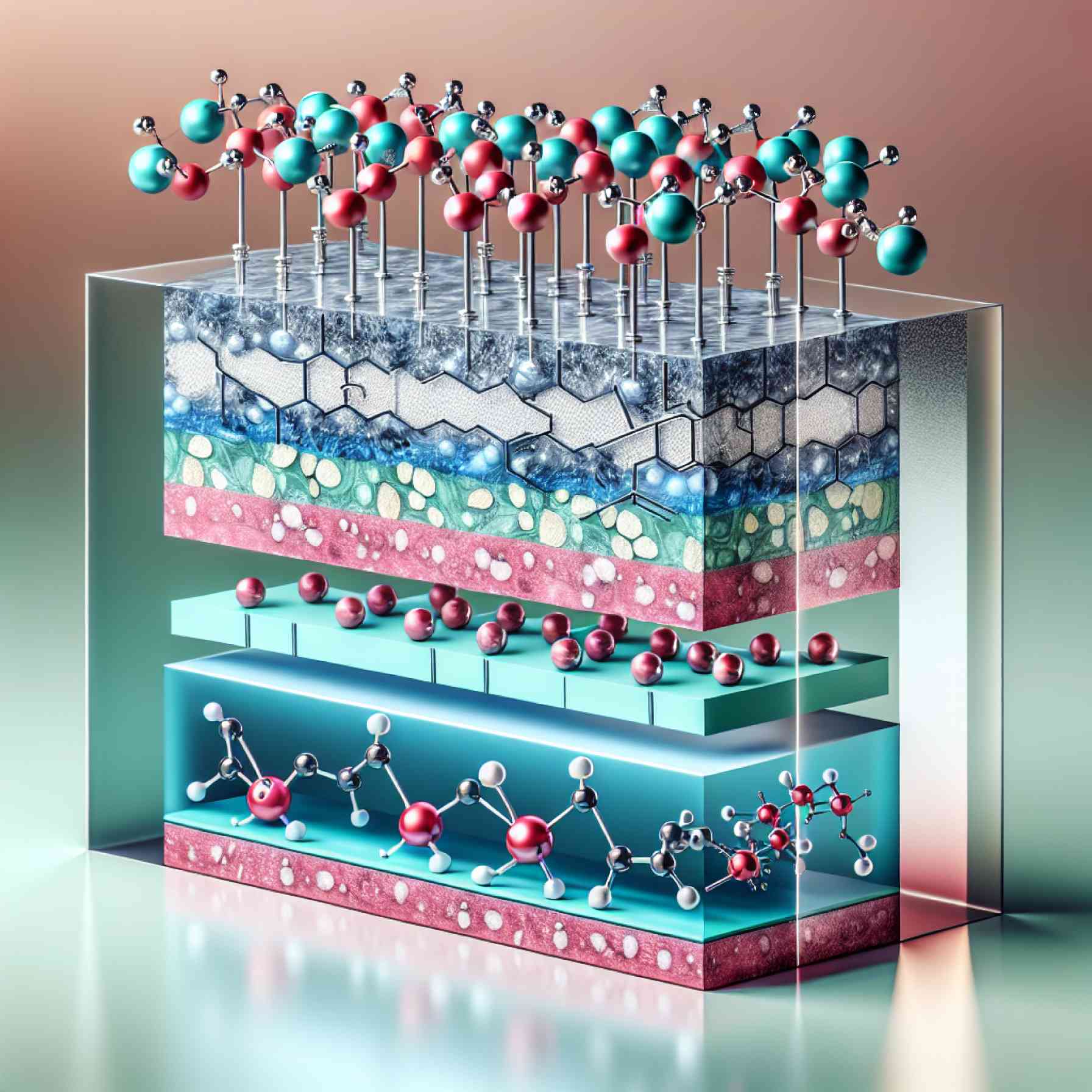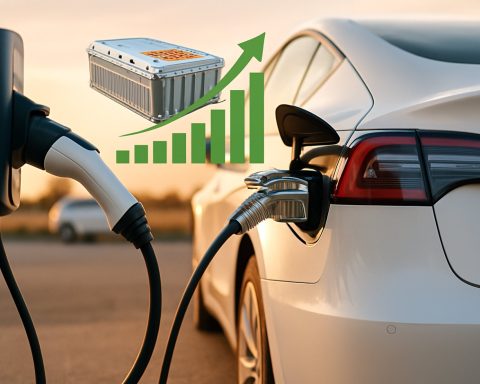- Technological innovation at the Technical University of Munich enhances battery efficiency using scandium and lithium antimonide.
- Introducing scandium creates vacancies in the crystal lattice, enabling lithium ions to move more freely, improving solid-state battery efficiency.
- The breakthrough results in a 30% increase in lithium ion conductivity, opening new possibilities for battery design.
- Led by Thomas F. Fässler, the research envisions scalable applications for modern electrodes with superior thermal resilience.
- Potential future advancements include applying this method to simpler material systems, with broad technological implications.
- The TUMint.Energy Research GmbH initiative translates academic discoveries into commercial innovations for cleaner energy solutions.
- The research highlights the transformative impact of minor modifications in materials science on industrial applications.
Amid the rolling hills of innovation at the Technical University of Munich, a team of trailblazers is challenging the status quo in battery technology. With a deft touch, they have infused the unassuming metal scandium into the matrix of lithium antimonide, creating spaces—vacancies—that transform the crystal lattice. This nuanced reshuffling invites lithium ions to dance with newfound freedom through the material, potentially accelerating the efficiency of solid-state batteries leaps and bounds beyond current benchmarks.
The heart of this discovery is not just the precision engineering but the staggering impact on lithium ion conductivity—a skyrocketing 30% improvement. Such unprecedented advancement warranted a deep dive by the Chair of Technical Electrochemistry at TUM. There, Tobias Kutsch and his team tailored their instruments to unravel the intricacies of a material that simultaneously channels ions and electrons with ease. Their meticulous verification confirmed what the excited whispers of chemistry hinted at—a breakthrough of significant gravitas.
Thomas F. Fässler, the orchestral conductor of this chemical symphony, envisions a future where this scalable innovation forms the bedrock of enhanced battery cells. His optimism is rooted in the compelling duality of ionic and electronic conduction, an alchemy suited for modern electrodes. With patent papers inked and visions set high, the ambition is clear: to pioneer a new generation of materials engineered for superior thermal resilience and manufacturability.
At the core of this revolution sits Jingwen Jiang’s revelation; this is but the dawn of a fresh class of substances. The tantalizing notion that this principle could extend to simpler material systems flutters with promise. Lithium-phosphorus configurations could embrace scandium’s touch, igniting a chain of enhancements across an array of technologies—a seismic shift from the current dependency on multi-layered lithium-sulfur constructs.
It’s a story not just of discovery, but of potential rippling through the realms of industrial application. TUMint.Energy Research GmbH, a vessel birthed in 2019 from a collaborative vision between the university and Bavaria’s economic stewards, stands at the helm. With a brigade of 20 dedicated scientists, this initiative holds the blueprint for translating academic brilliance into commercial might.
The horizon glimmers with promise as materials science inches closer to fulfilling an electrified future. By embracing scandium, this research carries forward an indelible message: sometimes the smallest additions disrupt the largest barriers, propelling humanity’s quest for cleaner, more efficient energy solutions into the realms of reality.
Unlocking the Future of Energy: How Scandium-Infused Batteries Could Revolutionize Technology
Introduction
In a groundbreaking leap for energy storage, a team at the Technical University of Munich (TUM) has innovated a battery technology that could significantly enhance the efficiency of solid-state batteries. By integrating scandium into lithium antimonide, researchers have achieved a 30% improvement in lithium ion conductivity. But what does this advancement mean for the future of battery technology? Let’s explore the wide-ranging implications and real-world applications.
Why Scandium is a Game Changer
Scandium, often overlooked in the periodic table, plays a critical role in modifying the properties of lithium antimonide. By creating vacancies within the crystal lattice, scandium allows lithium ions to move more freely, improving conductivity. This restructuring not only advances ion flow but also enhances electronic conduction, paving the way for superior battery performance.
Potential Benefits
1. Enhanced Battery Life: The improved conductivity means batteries could last longer and store more energy, reducing the need for frequent recharging.
2. Faster Charging: With greater ion movement, these batteries could charge faster, transforming how we power everything from smartphones to electric vehicles.
3. Safety and Stability: Solid-state batteries are generally safer as they are less prone to overheating and leakage compared to liquid-based batteries.
How-Scandium-Enhanced Batteries Work
1. Integration: Scandium is introduced into the lithium antimonide matrix, transforming its internal structure.
2. Formation of Vacancies: This integration creates vacancies in the crystal lattice, a space for lithium ions to move freely.
3. Improved Ion Movement: The result is a higher ion and electron mobility, translating to better battery efficiency.
Real-World Applications
– Electric Vehicles (EVs): Faster charging and longer-lasting batteries could make EVs more accessible and convenient, addressing range anxiety—a major barrier to adoption.
– Consumer Electronics: Smartphones, laptops, and tablets could see extended battery life, reducing electronic waste and enhancing user experiences.
– Grid Storage: Scandium-enhanced batteries could efficiently store renewable energy, crucial for balancing electric grid loads and supporting sustainable energy solutions.
Industry Trends and Market Forecasts
The scandium-enhanced battery market is expected to grow as demand for efficient, sustainable energy solutions rises. Deloitte predicts that the global battery market will reach over $90 billion by 2026, with a significant portion driven by advances like this in battery technology.
Controversies and Limitations
– Cost of Materials: Scandium is relatively rare and expensive, which could initially limit widespread adoption until extraction and manufacturing processes become scalable.
– Scalability Challenges: While promising in laboratory conditions, large-scale production and economic viability remain challenges that need addressing.
Actionable Recommendations
1. Explore Investment Opportunities: Companies involved in advanced battery materials and manufacturing could present promising investment opportunities.
2. Advocate for Sustainable Policies: Support initiatives that focus on resource sustainability and the development of recycling programs for rare materials.
3. Stay Informed: Keep abreast of developments in battery technology by following resources like the Technical University of Munich for the latest innovations and insights.
Conclusion
Scandium-infused batteries represent a pivotal shift in how we think about energy storage. While challenges remain, the potential to revolutionize various sectors is immense. By continuing to innovate and address economic and sustainability issues, we can unlock an electrifying future powered by cleaner, more efficient energy solutions.











